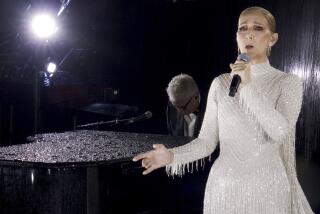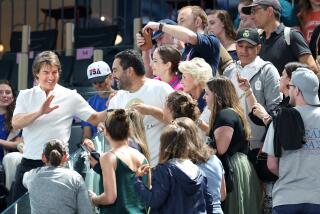20-second timeout: a look at sports’ national anthems
- Share via
Question: As usual at sporting events, Sunday’s NBA All-Star game will be preceded by the national anthem. Why?
Answer: Like telemarketers, trekkies and investment bankers, sports fans are only human. And humans are creatures of habit. American humans are creatures of heavy-mettle habit.
“The Star-Spangled Banner” made its sporting debut at the 1918 World Series between the Cubs and the Red Sox, but it wasn’t the national anthem then, it was just another muscular musical interlude to give the military props during a time of conflict. The U.S. had no official national anthem until Congress bestowed the honor upon our now-signature tune in 1931, although there was no lack of contenders. If you find the “Star-Spangled Banner” less melodic than macho, consider that our nation’s leaders almost tossed up an airball in the form of “Yankee Doodle.”
Playing our song was not habitual at America’s fields of play until World War II. War-era team owners believed that singing the anthem helped deflect attention from the fact that some people were risking their lives on the battlefield while their employees were risking jamming their fingers on the ball.
Modern-era anthem renditions range from the ridiculous (Roseanne Barr, San Diego Padres, 1990) to the sublime (Marvin Gaye, NBA All-Star game, 1983). Sunday’s All-Star singer is in heavy anthem rotation, with a Super Bowl, NFC Conference final and NBA Finals to her credit: Ladies and gentlemen -- “No Air” Jordin Sparks.
-- Ellen Alperstein
More to Read
Go beyond the scoreboard
Get the latest on L.A.'s teams in the daily Sports Report newsletter.
You may occasionally receive promotional content from the Los Angeles Times.










